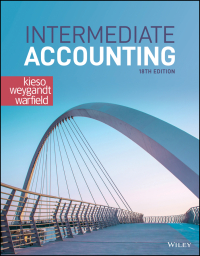Question
Two US discount retailers Walmart and Target operate in the retail chain industry. Both of them are profitable but as the data below shows, Walmart
Two US discount retailers Walmart and Target operate in the retail chain industry. Both of them are profitable but as the data below shows, Walmart has a higher profitability. (For the financial year ending January 2008, Walmart earned a Return on Invested Capital (ROIC) of 14.1%, while Target earned a respectable 10.6%.) It is said that Walmarts high profitability is a function of its strategy and the distinctive competencies that strategic investments have built over the years, particularly in the area of information systems and logistics.
How do you explain Walmarts superior profitability? Based on the data presented below, you are to analyze why and how well Walmart is achieving and sustaining a competitive advantage. Highlight Walmart and Targets strengths and weaknesses in your answer; showing where there is room for improvement and where any of them is excelling.
| Company | Return On Sales (ROS) | Capital Turnover (Sales/Invested Capital) | COGS/Sales | SG&A/Sales | Working Capital/Sales | PPE/Sales |
| Target | 4.5% | 2.08% | 66.1% | 22.95% | 11.24% | 38.02% |
| Walmart | 3.43% | 3.82% | 76.5% | 18.77% | -2.9% | 25.9% |
In formulating your response, use the additional information presented below which is directly linked with one or more of the numbers presented in the aforementioned table. The higher number of ratios you use in explaining Walmarts superior competitive advantage and profitability, the better your scores get.
Walmart has a lower ROS than Target. This is consistent with its longtime strategic goal that can be explained by the type of product markup Walmart does.
Walmarts early strategy was to focus on small towns that could only support one discounter. It has also become a powerful brand against its competitors even when Walmart stores are located close to them in suburban areas.
Walmart sticks to its low-price philosophy and does not usually have an overstock problem. Thus, the company does not have to hold periodic sales, nor does it have to bear the costs of promoting those sales (e.g., sending out advertisements and coupons in local newspapers). In addition, Walmart operates with a flat-organization structure that has very few layers of management between the head office and store managers (the company has no regional headquarters). Walmart can operate with such flat structure because its information systems allow the companys top managers to monitor and control individual stores directly rather than relying on intervening layers of subordinates to do that for them.
Walmart generates $3.82 for every dollar of capital invested in the business, whereas Target generates only $2.08 for every dollar of capital invested. The impact can be broken down into working capital and fixed capital components. Walmart does not have to pay for merchandise until 60 days after it is delivered. Walmart turns over its inventory rapidly7.72 times a year or every 47 daysthat it typically sells merchandise before it has to pay its suppliers. Walmart has made strategic investments in information systems and logistics.
Many of Wamarts stores are still located in small towns where land is cheap, whereas most of Targets stores are located in more expensive suburban mall locations. Walmart does not need to devote as much space in stores to storing inventory. Walmart needs less space at a distribution center to support a store. Walmarts store traffic is higher than at comparable discounters such as Target. The stores are simply busier.
Step by Step Solution
There are 3 Steps involved in it
Step: 1

Get Instant Access to Expert-Tailored Solutions
See step-by-step solutions with expert insights and AI powered tools for academic success
Step: 2

Step: 3

Ace Your Homework with AI
Get the answers you need in no time with our AI-driven, step-by-step assistance
Get Started


